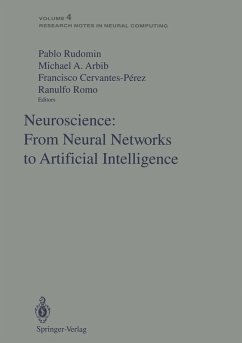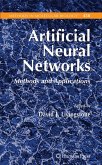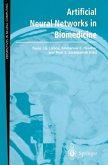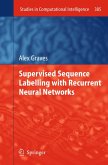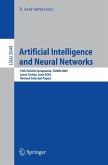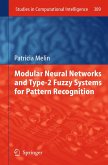Neuroscience: From Neural Networks to Artificial Intelligence (eBook, PDF)
Proceedings of a U.S.-Mexico Seminar held in the city of Xalapa in the state of Veracruz on December 9-11, 1991
Redaktion: Rudomin, Pablo; Romo, Ranulfo; Cervantes-Perez, Francisco; Arbib, Michael A.


Alle Infos zum eBook verschenken

Neuroscience: From Neural Networks to Artificial Intelligence (eBook, PDF)
Proceedings of a U.S.-Mexico Seminar held in the city of Xalapa in the state of Veracruz on December 9-11, 1991
Redaktion: Rudomin, Pablo; Romo, Ranulfo; Cervantes-Perez, Francisco; Arbib, Michael A.
- Format: PDF
- Merkliste
- Auf die Merkliste
- Bewerten Bewerten
- Teilen
- Produkt teilen
- Produkterinnerung
- Produkterinnerung

Hier können Sie sich einloggen

Bitte loggen Sie sich zunächst in Ihr Kundenkonto ein oder registrieren Sie sich bei bücher.de, um das eBook-Abo tolino select nutzen zu können.
This book presents contributions of researchers working in Neuroscience, Brain Theory and Artificial Intelligence discussing experimental and conceptual approaches to the understanding of frontier problems such as processing of sensory information, visual processing, learning and knowledge representation, motor integration and the constru#tion of complex automata. The methods cover a wide variety of approaches and techniques from single channel analysis in neuronal membranes to learning processes in neural network models and those techniques used for symbolic processing in distributed artificial intelligence.…mehr
- Geräte: PC
- ohne Kopierschutz
- eBook Hilfe
- Größe: 55.29MB
![Artificial Neural Networks (eBook, PDF) Artificial Neural Networks (eBook, PDF)]() Artificial Neural Networks (eBook, PDF)72,95 €
Artificial Neural Networks (eBook, PDF)72,95 €![Artificial Neural Networks - ICANN 2007 (eBook, PDF) Artificial Neural Networks - ICANN 2007 (eBook, PDF)]() Artificial Neural Networks - ICANN 2007 (eBook, PDF)72,95 €
Artificial Neural Networks - ICANN 2007 (eBook, PDF)72,95 €![Artificial Neural Networks in Biomedicine (eBook, PDF) Artificial Neural Networks in Biomedicine (eBook, PDF)]() Artificial Neural Networks in Biomedicine (eBook, PDF)72,95 €
Artificial Neural Networks in Biomedicine (eBook, PDF)72,95 €![Artificial Neural Networks - ICANN 2009 (eBook, PDF) Artificial Neural Networks - ICANN 2009 (eBook, PDF)]() Artificial Neural Networks - ICANN 2009 (eBook, PDF)112,95 €
Artificial Neural Networks - ICANN 2009 (eBook, PDF)112,95 €![Supervised Sequence Labelling with Recurrent Neural Networks (eBook, PDF) Supervised Sequence Labelling with Recurrent Neural Networks (eBook, PDF)]() Alex GravesSupervised Sequence Labelling with Recurrent Neural Networks (eBook, PDF)136,95 €
Alex GravesSupervised Sequence Labelling with Recurrent Neural Networks (eBook, PDF)136,95 €![Artificial Intelligence and Neural Networks (eBook, PDF) Artificial Intelligence and Neural Networks (eBook, PDF)]() Artificial Intelligence and Neural Networks (eBook, PDF)40,95 €
Artificial Intelligence and Neural Networks (eBook, PDF)40,95 €![Modular Neural Networks and Type-2 Fuzzy Systems for Pattern Recognition (eBook, PDF) Modular Neural Networks and Type-2 Fuzzy Systems for Pattern Recognition (eBook, PDF)]() Patricia MelinModular Neural Networks and Type-2 Fuzzy Systems for Pattern Recognition (eBook, PDF)112,95 €
Patricia MelinModular Neural Networks and Type-2 Fuzzy Systems for Pattern Recognition (eBook, PDF)112,95 €-
-
-
Dieser Download kann aus rechtlichen Gründen nur mit Rechnungsadresse in A, B, BG, CY, CZ, D, DK, EW, E, FIN, F, GR, HR, H, IRL, I, LT, L, LR, M, NL, PL, P, R, S, SLO, SK ausgeliefert werden.
- Produktdetails
- Verlag: Springer Berlin Heidelberg
- Seitenzahl: 579
- Erscheinungstermin: 6. Dezember 2012
- Englisch
- ISBN-13: 9783642781025
- Artikelnr.: 53155553
- Verlag: Springer Berlin Heidelberg
- Seitenzahl: 579
- Erscheinungstermin: 6. Dezember 2012
- Englisch
- ISBN-13: 9783642781025
- Artikelnr.: 53155553
- Herstellerkennzeichnung Die Herstellerinformationen sind derzeit nicht verfügbar.
Neuronal networks of the mammalian brain have functionally different classes of neurons: Suggestions for a taxonomy of membrane ionic conductances.
Electrical coupling in networks containing oscillators.
Dynamical approach to collective brain.
Schema
theoretic models of arm, hand, and eye movements.
Cooperative distributed problem solving between (and within) intelligent agents.
II. Processing of Sensory Information.
Spinal processing of impulse trains from sensory receptors.
Central control of sensory information.
Parallel and serial processing in the somatosensory system.
Cortical representation of touch.
An introduction to human haptic exploration and recognition of objects for neuroscience and AI.
Common principles in auditory and visual processing.
III. Visual Processing.
Neuronal substrate of ligth
induced attraction and withdrawal in crayfish: A case of behavioral selection.
Neural and psychophysical models of chromatic and achromatic visual processes.
Computational vision: A probabilistic view of the multi
module paradigm.
State of the art in image processing.
Shape recognition in mind, brain, and machine.
IV. Learning And Knowledge Representation.
Contrasting properties of NMD A
dependent and NMDA
independent forms of LTP in hippocampal pyramidal cells.
Kindling.
Learning automata: An alternative to artificial neural networks.
Learning, from a logical point of view.
Knowledge representation for speech processing.
Data management and inference strategies in a human gait pathology expert system.
V. Neuronal Systems For Motor Integration.
Entrainment of the spinal neuronal network generating locomotion.
Cortical representation of intended movements.
Saccadic and fixation sytems of oculomotor control in monkey superior colliculus.
Modulatory effects on prey
recognition in amphibia: A theoretical
experimental study.
VI. Robotics And Control.
Outline for a theory of motor behavior: Involving cooperative actions of the cerebellum, basal ganglia, and cerebral cortex.
Neural networks and adaptive control.
Robustness issues in robot manipulators.
Symbolic planning versus neural control in robots.
Divine inheritance vs. experience in the world: Where does the knowledge base come from?.
VII. A Concluding Perspective.
Methodological considerations in Cognitive Science.
Viewpoints and controversies.
Neuronal networks of the mammalian brain have functionally different classes of neurons: Suggestions for a taxonomy of membrane ionic conductances.
Electrical coupling in networks containing oscillators.
Dynamical approach to collective brain.
Schema
theoretic models of arm, hand, and eye movements.
Cooperative distributed problem solving between (and within) intelligent agents.
II. Processing of Sensory Information.
Spinal processing of impulse trains from sensory receptors.
Central control of sensory information.
Parallel and serial processing in the somatosensory system.
Cortical representation of touch.
An introduction to human haptic exploration and recognition of objects for neuroscience and AI.
Common principles in auditory and visual processing.
III. Visual Processing.
Neuronal substrate of ligth
induced attraction and withdrawal in crayfish: A case of behavioral selection.
Neural and psychophysical models of chromatic and achromatic visual processes.
Computational vision: A probabilistic view of the multi
module paradigm.
State of the art in image processing.
Shape recognition in mind, brain, and machine.
IV. Learning And Knowledge Representation.
Contrasting properties of NMD A
dependent and NMDA
independent forms of LTP in hippocampal pyramidal cells.
Kindling.
Learning automata: An alternative to artificial neural networks.
Learning, from a logical point of view.
Knowledge representation for speech processing.
Data management and inference strategies in a human gait pathology expert system.
V. Neuronal Systems For Motor Integration.
Entrainment of the spinal neuronal network generating locomotion.
Cortical representation of intended movements.
Saccadic and fixation sytems of oculomotor control in monkey superior colliculus.
Modulatory effects on prey
recognition in amphibia: A theoretical
experimental study.
VI. Robotics And Control.
Outline for a theory of motor behavior: Involving cooperative actions of the cerebellum, basal ganglia, and cerebral cortex.
Neural networks and adaptive control.
Robustness issues in robot manipulators.
Symbolic planning versus neural control in robots.
Divine inheritance vs. experience in the world: Where does the knowledge base come from?.
VII. A Concluding Perspective.
Methodological considerations in Cognitive Science.
Viewpoints and controversies.
